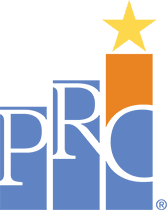No longer does “patient” mean sick people turning to the local doctor for treatment. Today, they’re consumers with questions, insights, and opinions, and they remain the center of conferences such as the SHSMD Connections conference. In years past, retail industry leaders have spoken to healthcare professionals, offering insight into what makes retail operationally successful. Attitudes remain that healthcare must adapt its mindset to be more like that of retail—working towards a consumer first model. In a competitive market, adaptation is critical. New hospitals and systems continue to appear across the nation, alongside specialty and retail clinics. This competition is not projected to slow down, as an increasing number of organizations not typically associated with healthcare, notably Amazon, enter the marketplace and offer consumers new choices for care from names they already trust.
But how exactly are consumers treating healthcare decision making? According to one speaker at the 2018 SHSMD conference, consumers generally treat most healthcare as though it’s a form of fast food, rather than fine dining. For example, a growing majority of consumers enter healthcare institution through urgent care centers and outpatient clinics rather than traditional venues, opting for the “fast track” of care. This culture shift does not mean that the primary care model is dead; nearly every consumer still has a regular doctor they turn to for primary and routine care. However, the selection process for that primary care physician has become much more competitive than it was twenty years ago, with price and access weighing heavier on consumers’ minds. In an informed society, patients want to know ahead of time if they can expect to spend $45 or $60 for an urgent care visit, if they’ll need to travel 4 blocks or 4 miles to receive care.
![]()
These evolving attitudes ripple into specialty care. While many consumers will simply visit their referred specialist, many others will not. Unlike those seeking primary care, these specialty consumers are much more focused on the perceived quality of care than the price or access. It’s important to note that most people will both pay more and travel greater distance to receive the best heart care or cancer treatment—consider the number of people who bypass local institutions to receive care at Mayo Clinic or The Johns Hopkins Hospital. Why? Excellent care is a core element of these hospitals’ brands, driving thousands of patients into their facilities. To accommodate the evolving market, branding and market awareness is more important than ever.
Brands represent what people think about your institution, largely based on experience. Remember, the Nike swoosh is not their brand. It is the “just do it” attitude of the persevering athlete that is truly Nike’s brand. To ensure the best brand, hospitals must do everything they can to be excellent from the perspective of their patients, employees, and physicians. Your logo and marketing play into this, but your market perceptions, based on experience and attitude, embody your hospital’s brand.
The trouble is that excellence looks different to everyone; we all have different expectations to exceed. The key is to understand what drives decisions of consumers in your market. Healthcare consumers are wildly diverse, but share one common emotion: confusion. This confusion sends the wrong patients to emergency rooms, frustrates anyone who has ever received a hospital bill, and inspires the consumer to research their own symptoms on the internet, self-diagnose, and even bypass receiving healthcare at all. How well your brand works within this confusion is a good indicator of how the public perceives your quality of care.
Excellent patient experience is not just about fixing the ailment, but also about charming the patient and family members in the process. This wow factor must be done consistently and at every touchpoint, from being able to utilize your institution as an online resource for information on symptoms, to having the ability to easily find and schedule appointments with doctors and clinics. There are countless people involved, from both a consumer and owner’s perspective. Family members need to be able to navigate your hospital, both physically and online. The receptionists must be friendly and helpful, the nurses must show compassion and care, and the doctors must listen to the patients—even the food and billing process must exceed expectations for excellence to be obtained! All of these factors build your brand of excellence, allowing you to differentiate your hospital from the “very good” folks down the road. Understanding your own brand, its perceptions, and the brand of your competitors are the first steps in adapting your hospital model for a consumer-driven, evolving marketplace.
Special thanks goes out to Keith Schneider, Director of Consumer & Engagement Studies, for contributing to this blog

